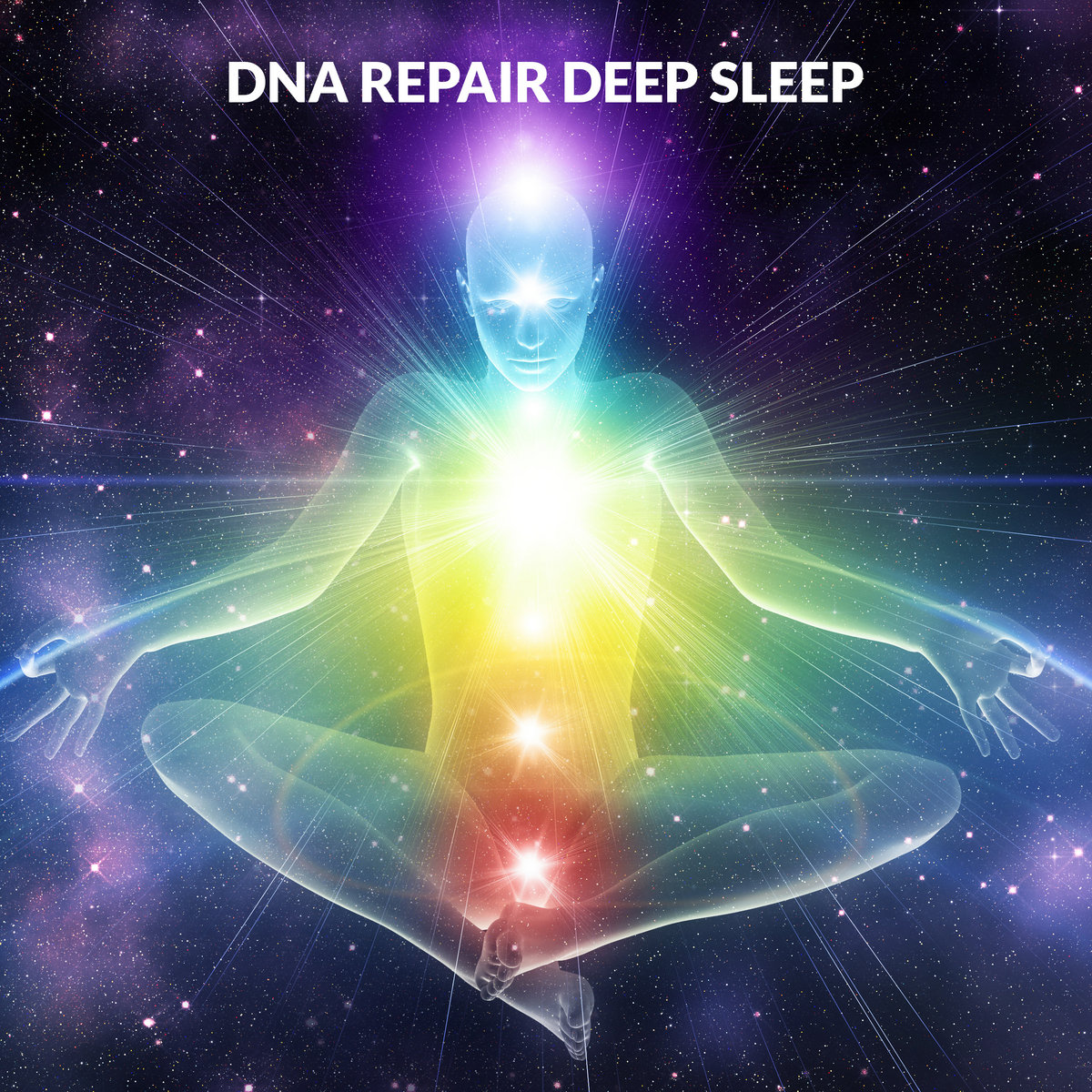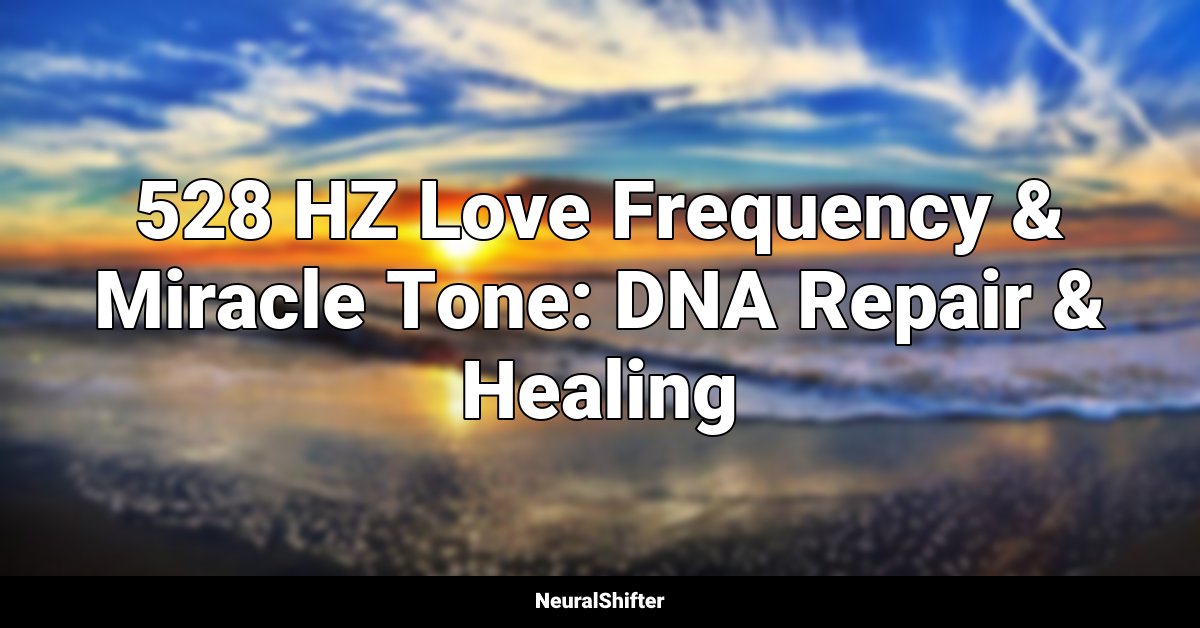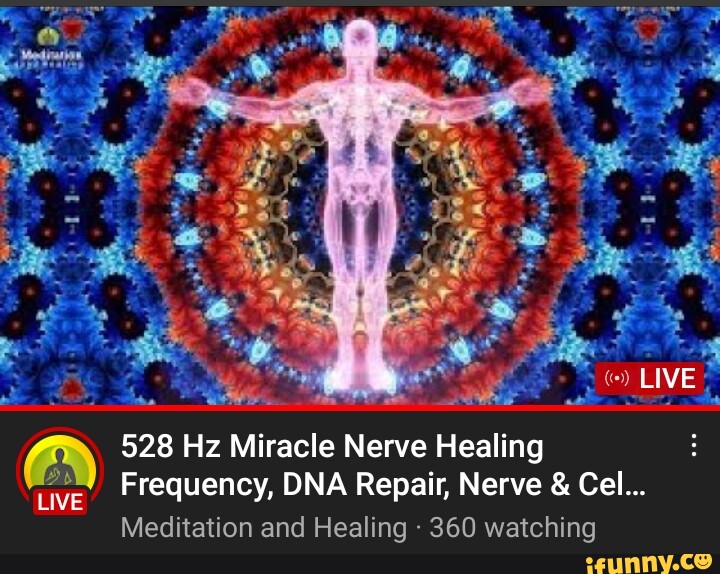528 Hz Frequency Dna Repair Healing Mp3 Download

Imagine a world where healing isn't just found in pills or procedures, but in the very vibrations that surround us. Picture yourself enveloped in soothing sounds, feeling a sense of calm wash over you, a gentle hum resonating deep within your cells. Could sound, specifically a frequency known as 528 Hz, hold a key to unlocking our body's innate healing potential?
This article delves into the growing interest surrounding the 528 Hz frequency and its purported benefits, including DNA repair and overall well-being. We'll explore the science, the claims, and the controversies surrounding this captivating area of sound healing.
The Allure of 528 Hz: A Brief History
The 528 Hz frequency is often associated with the ancient Solfeggio frequencies, a six-tone scale believed to have been used in sacred music, including Gregorian chants. These frequencies were allegedly "rediscovered" in the 1970s and have since gained popularity in New Age and alternative healing communities.
Each frequency in the Solfeggio scale is said to possess unique healing properties. The 528 Hz frequency, also known as the "Love Frequency" or the "Miracle Tone," is specifically linked to DNA repair, transformation, and miracles.
According to proponents, listening to music tuned to 528 Hz can help repair damaged DNA, enhance creativity, increase energy levels, and even attract love and positive change into one's life.
What the Science Says (and Doesn't Say)
The claim that 528 Hz can directly repair DNA is a significant one, and it's crucial to approach it with a discerning eye. While some studies have investigated the effects of sound and music on biological systems, concrete scientific evidence supporting the direct repair of DNA by 528 Hz is limited.
Some research suggests that certain frequencies can influence gene expression and cellular processes. However, these studies are often conducted in vitro (in a lab setting) and may not translate directly to the complex environment of the human body.
Dr. Lee Bartel, a renowned researcher in music and health at the University of Toronto, has extensively studied the effects of music on various conditions, including pain management and cognitive function. While his research highlights the potential of music therapy, he emphasizes the need for rigorous, controlled studies to validate specific claims about individual frequencies.
"While the concept of specific frequencies having specific effects is intriguing, we need more robust scientific evidence to support these claims," says Dr. Bartel. "It's important to distinguish between anecdotal experiences and scientifically proven results."
Exploring the Benefits: Stress Reduction and Relaxation
Despite the lack of conclusive evidence regarding DNA repair, many individuals report experiencing positive effects from listening to 528 Hz music. These benefits often include stress reduction, relaxation, and an overall sense of well-being.
The calming nature of the music can help lower heart rate, reduce blood pressure, and promote a state of tranquility. This, in turn, can have a positive impact on mental and emotional health.
Furthermore, the placebo effect should not be discounted. Believing that a particular treatment will be effective can, in itself, lead to positive outcomes.
The Popularity of 528 Hz MP3 Downloads
The widespread availability of 528 Hz MP3 downloads has contributed to its growing popularity. These tracks often feature ambient sounds, nature soundscapes, or instrumental music tuned to the 528 Hz frequency.
Many websites and apps offer these downloads, promising a range of benefits from stress relief to enhanced meditation experiences. The ease of access and the relatively low cost make it an attractive option for those seeking alternative healing modalities.
However, it's essential to be cautious when choosing 528 Hz music. Ensure that the source is reputable and that the music is genuinely tuned to the correct frequency. There are apps available that can analyze the frequency of an audio file.
Ethical Considerations and Responsible Use
The popularity of alternative healing modalities raises ethical considerations. It's crucial to avoid making unsubstantiated claims or promising miraculous cures. Responsible practitioners emphasize the importance of consulting with healthcare professionals and using sound therapy as a complementary approach, not a replacement for conventional medical treatment.
It's equally important to be mindful of potential biases and to critically evaluate the information available online. Seek out evidence-based resources and consult with experts in the field before making decisions about your health.
Remember that sound therapy, like any form of healing, is a personal journey. What works for one person may not work for another. It's essential to listen to your body and to trust your intuition.
Beyond the Hype: Finding Your Own Resonance
While the scientific evidence for DNA repair through 528 Hz music may be limited, the potential benefits of sound and music for promoting relaxation, stress reduction, and overall well-being are undeniable. The key lies in approaching this area with a balanced perspective, separating fact from fiction, and finding what resonates with you personally.
Perhaps the true power of 528 Hz lies not in its ability to perform miracles, but in its capacity to connect us to something deeper within ourselves. It is a reminder of the profound interconnectedness of sound, vibration, and the human experience.
Ultimately, whether you choose to explore the world of 528 Hz or other forms of sound healing, the journey is about finding harmony, balance, and a deeper connection to your own inner rhythm. It’s about finding *your* frequency, the one that helps you feel whole, alive, and truly connected.


















